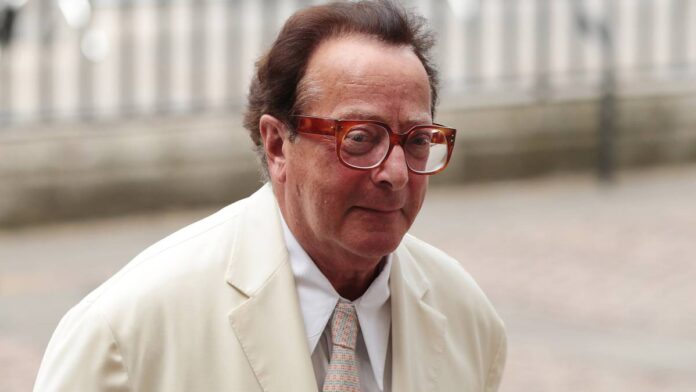‘We’ll see you at 11.30am,” says Lord Saatchi. His wife, Josephine Hart, died 11 years ago and it is clear that I will be meeting them both. The co-founder (with his brother Charles) of the biggest advertising agency in the world and Margaret Thatcher’s political guru spent seven years eating a breakfast of grapefruit segments with his wife at her tomb after her death from primary peritoneal cancer. He still talks to her all the time, “but she doesn’t answer”. Now he has written an extraordinary book about reuniting in Heaven. After reading the 120-page novel Do Not Resuscitate twice, I am not sure whether we will be meeting at his house in West Sussex or at the pearly gates where the book is set. To an outsider he may sound like a reclusive multimillionaire deranged by grief, but Maurice Saatchi writes lucidly and beautifully about whether he should be allowed into Heaven as an impossibly rich man who taught the world about negative campaigning, but who loved his wife passionately and beyond reason.
The vast iron gates slowly open and the raked gravel scrunches as I make my way up the winding drive shrouded by laurels and rhododendrons. A view to his wife’s mausoleum in the woods suddenly opens before me and beyond is their 19th-century folly, all high walls covered in ivy, gothic turrets and a castellated roof. There are no signposts – “I had the house removed from Google Maps,” he tells me. But the name Josephine Hart has been etched into the lawn. In the hall, her fur hats are lined up with her boots and umbrella. I feel as though I’m entering an F Scott Fitzgerald story.
The house is all immaculate cream carpets and walls, beige sofas and hundreds of dark red roses, changed each week by staff in uniforms. Saatchi is on the staircase being photographed in a silk shirt, white trousers and sandals, blinking out of his vast tortoiseshell glasses, surrounded by tapestries. He has a dozen identical shirts. The 76-year-old looks frozen in time, a relic of a divine existence as a Eighties legend. But he suddenly comes to life and offers me a drink.
A kind housekeeper materialises with a pot of tea and an espresso for Saatchi as he waves the photographer and his assistant goodbye. Then we step into the library he has created for her: thousands of her favourite poetry books and plays are arranged around photographs and portraits of his wife propped on easels. I met her years ago, an extraordinary woman who commanded parties while her clever husband charmed guests from Helmut Newton to Sir Elton John.
There is a full-size cutout of her smiling as she saunters across the Place Vendôme. Carved in stone are the words, “Shall we dance?” from the musical The King and I, and first-edition books are displayed opened at her favourite passages. In the centre, a clock is set at 1pm. “Why?” I ask. Saatchi does nothing by chance. He shows me a note, “1pm or never,” framed above the fireplace but won’t elaborate. It’s the beginning of his love story, told in three simple words as always. “She was late,” is all he tells me. They were married for 27 years so he must have forgiven her.


